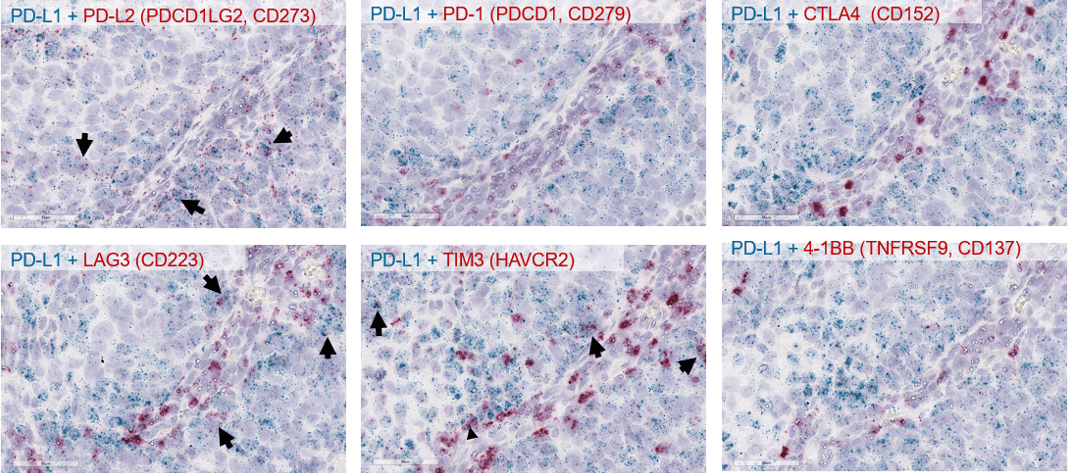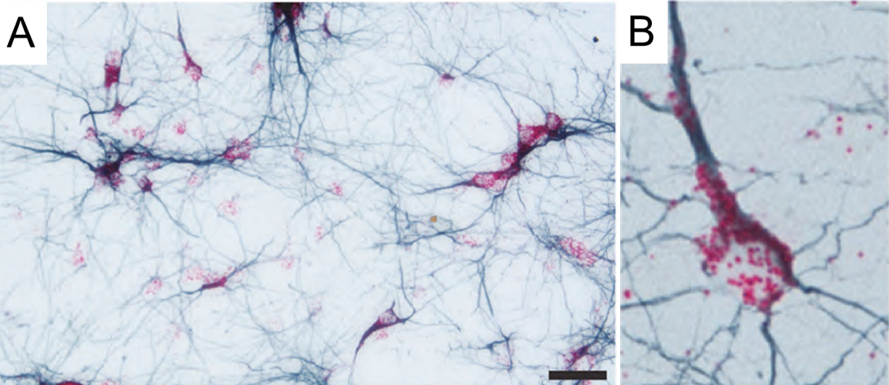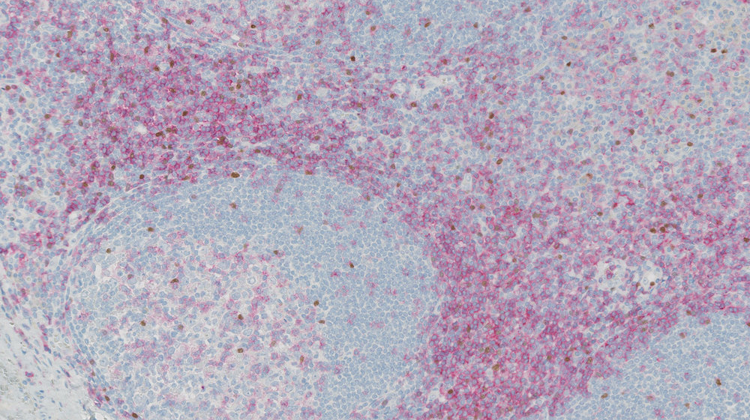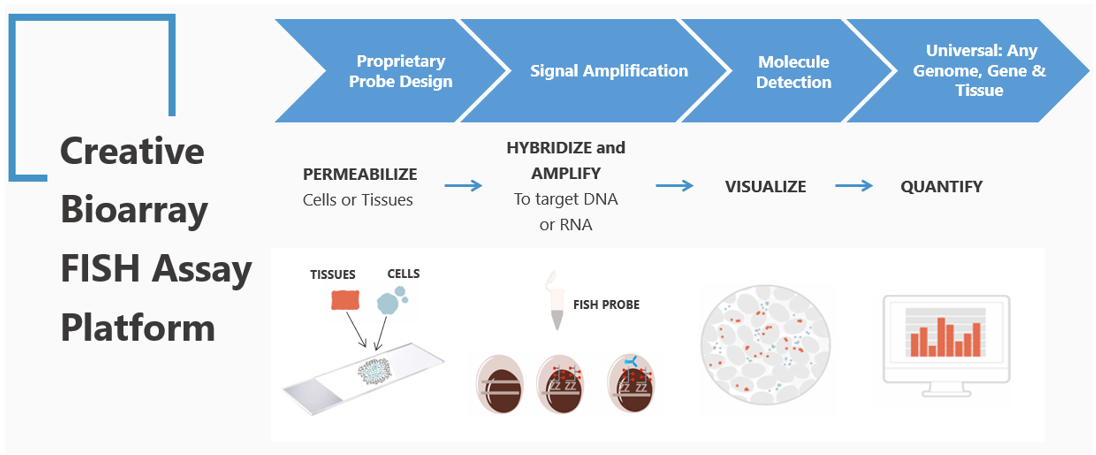- You are here: Home
- Services
- ISH/FISH Services
- In Situ Hybridization (ISH) & RNAscope Service
Services
-
Cell Services
- Cell Line Authentication
- Cell Surface Marker Validation Service
-
Cell Line Testing and Assays
- Toxicology Assay
- Drug-Resistant Cell Models
- Cell Viability Assays
- Cell Proliferation Assays
- Cell Migration Assays
- Soft Agar Colony Formation Assay Service
- SRB Assay
- Cell Apoptosis Assays
- Cell Cycle Assays
- Cell Angiogenesis Assays
- DNA/RNA Extraction
- Custom Cell & Tissue Lysate Service
- Cellular Phosphorylation Assays
- Stability Testing
- Sterility Testing
- Endotoxin Detection and Removal
- Phagocytosis Assays
- Cell-Based Screening and Profiling Services
- 3D-Based Services
- Custom Cell Services
- Cell-based LNP Evaluation
-
Stem Cell Research
- iPSC Generation
- iPSC Characterization
-
iPSC Differentiation
- Neural Stem Cells Differentiation Service from iPSC
- Astrocyte Differentiation Service from iPSC
- Retinal Pigment Epithelium (RPE) Differentiation Service from iPSC
- Cardiomyocyte Differentiation Service from iPSC
- T Cell, NK Cell Differentiation Service from iPSC
- Hepatocyte Differentiation Service from iPSC
- Beta Cell Differentiation Service from iPSC
- Brain Organoid Differentiation Service from iPSC
- Cardiac Organoid Differentiation Service from iPSC
- Kidney Organoid Differentiation Service from iPSC
- GABAnergic Neuron Differentiation Service from iPSC
- Undifferentiated iPSC Detection
- iPSC Gene Editing
- iPSC Expanding Service
- MSC Services
- Stem Cell Assay Development and Screening
- Cell Immortalization
-
ISH/FISH Services
- In Situ Hybridization (ISH) & RNAscope Service
- Fluorescent In Situ Hybridization
- FISH Probe Design, Synthesis and Testing Service
-
FISH Applications
- Multicolor FISH (M-FISH) Analysis
- Chromosome Analysis of ES and iPS Cells
- RNA FISH in Plant Service
- Mouse Model and PDX Analysis (FISH)
- Cell Transplantation Analysis (FISH)
- In Situ Detection of CAR-T Cells & Oncolytic Viruses
- CAR-T/CAR-NK Target Assessment Service (ISH)
- ImmunoFISH Analysis (FISH+IHC)
- Splice Variant Analysis (FISH)
- Telomere Length Analysis (Q-FISH)
- Telomere Length Analysis (qPCR assay)
- FISH Analysis of Microorganisms
- Neoplasms FISH Analysis
- CARD-FISH for Environmental Microorganisms (FISH)
- FISH Quality Control Services
- QuantiGene Plex Assay
- Circulating Tumor Cell (CTC) FISH
- mtRNA Analysis (FISH)
- In Situ Detection of Chemokines/Cytokines
- In Situ Detection of Virus
- Transgene Mapping (FISH)
- Transgene Mapping (Locus Amplification & Sequencing)
- Stable Cell Line Genetic Stability Testing
- Genetic Stability Testing (Locus Amplification & Sequencing + ddPCR)
- Clonality Analysis Service (FISH)
- Karyotyping (G-banded) Service
- Animal Chromosome Analysis (G-banded) Service
- I-FISH Service
- AAV Biodistribution Analysis (RNA ISH)
- Molecular Karyotyping (aCGH)
- Droplet Digital PCR (ddPCR) Service
- Digital ISH Image Quantification and Statistical Analysis
- SCE (Sister Chromatid Exchange) Analysis
- Biosample Services
- Histology Services
- Exosome Research Services
- In Vitro DMPK Services
-
In Vivo DMPK Services
- Pharmacokinetic and Toxicokinetic
- PK/PD Biomarker Analysis
- Bioavailability and Bioequivalence
- Bioanalytical Package
- Metabolite Profiling and Identification
- In Vivo Toxicity Study
- Mass Balance, Excretion and Expired Air Collection
- Administration Routes and Biofluid Sampling
- Quantitative Tissue Distribution
- Target Tissue Exposure
- In Vivo Blood-Brain-Barrier Assay
- Drug Toxicity Services
In Situ Hybridization (ISH) & RNAscope Service
RNA In Situ Hybridization is a widely-applicable histology technique that utilizes a nucleic-acid based probe to localize to RNA sequences of interest, and allows for visualization of mRNA expression in cells or tissues. This technique can provide valuable special and temporal information regarding gene expression in situ, such as whether expression at the mRNA level is limited to a specific anatomic structure or cell type.
 Figure 1. Tonsil tissue was stained with the PD-1 RNA ISH probe.
Figure 1. Tonsil tissue was stained with the PD-1 RNA ISH probe.
Creative Bioarray offers Custom RNA ISH and ACD Bio's RNAscope service. In situ Hybridization is a popular approach for the evaluation of changes in biomarker expression or a particular drug response effect in tissues, especially in the case of novel biomarkers where were robust, a well validated antibodies are not commercially available. We have extensive experience in the quantification of RNA expression on a cell by cell basis across a whole tissue section or within defined regions of interest.
 Figure 2. Co-expression Profiles of Immune Checkpoint Markers in Selected Tumors Using RNA ISH.
Figure 2. Co-expression Profiles of Immune Checkpoint Markers in Selected Tumors Using RNA ISH.
 Figure 3. Urine tissue was stained with the Non-coding RNA-PCA3.
Figure 3. Urine tissue was stained with the Non-coding RNA-PCA3.
 Figure 4. RNA ISH was combined with IHC to detect Tau ISH signal in neuronal cell bodies and processes labeled with tubulin by IHC.
Figure 4. RNA ISH was combined with IHC to detect Tau ISH signal in neuronal cell bodies and processes labeled with tubulin by IHC.

Chromogenic and Fluorescent Options
Our quantitative digital pathology services can be applied to both chromogenic (CISH) and fluorescently (FISH) labelled probes.
Classification of Cells
The accuracy of our image analysis means we can classify individual cells based on number of RNA spots or based on localization of RNA within a specific sub cellular compartment.
Creative Bioarray's ISH services are flexible to meet your needs as follows:
- Preparation of Tissue Sections
- Probe Design, Labeling and Purification
- Hybridization
- ISH Staining
- Analysis
- Reporting

Benefits of Creative Bioarray's ISH & RNAScope Services:
- Reliable Data - Our attention to detail and experience with forming cell objects means we are able to accurately quantify transcription levels
- Complete Transparency - We provide a secure web portal, allowing you to view all your images and analysis in real time
Quotation and ordering
Our customer service representatives are available 24hr a day! We thank you for choosing Creative Bioarray at your preferred In Situ Hybridization (ISH) & RNAscope Service.
Publications
- Heckl S M, Pellinghaus M, Krüger S, et al. Epithelial insulin receptor expression–prognostic relevance in colorectal cancer[J]. Oncotarget, 2018, 9(101): 37497.
Explore Other Options
For research use only. Not for any other purpose.

